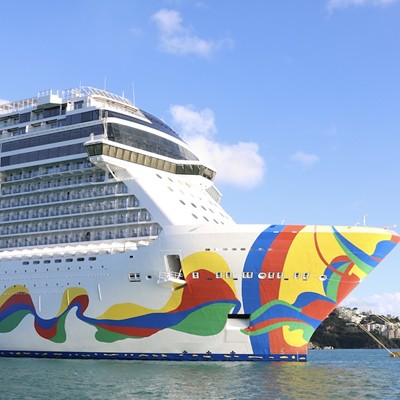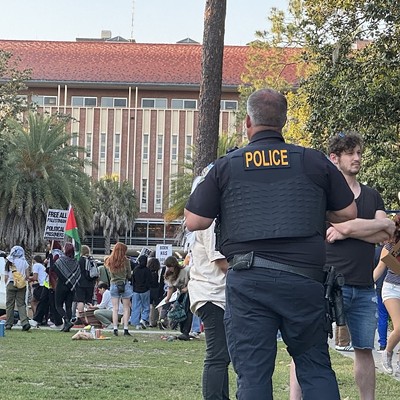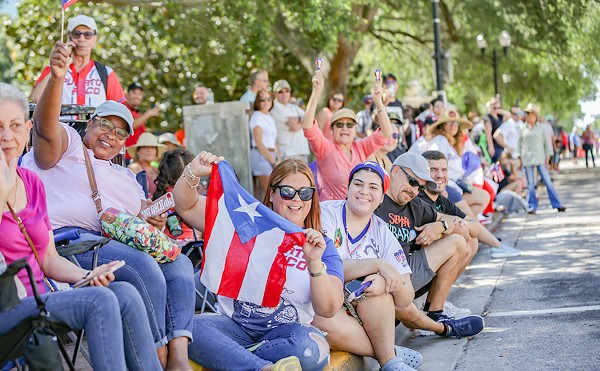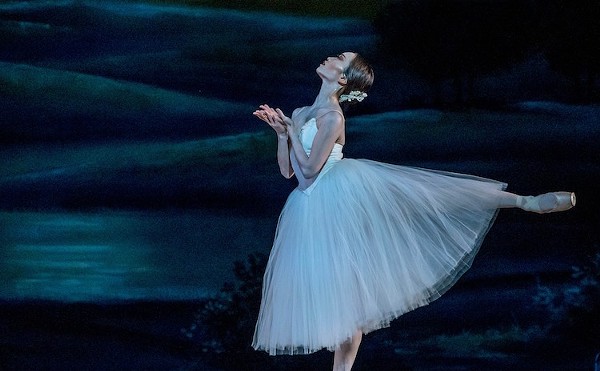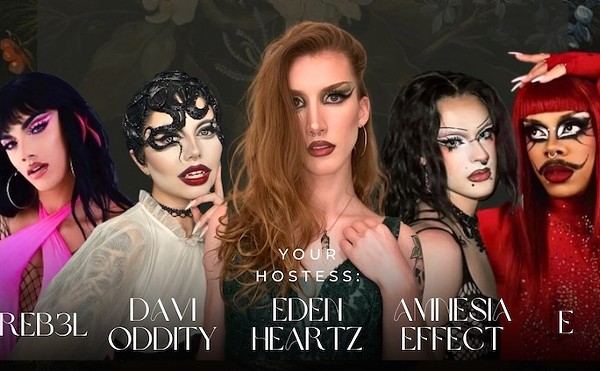The Internationals
Through Feb. 12 at Gallery at Avalon Island, 39 S. Magnolia Ave.
407-803-6670
www.galleryatavalonisland.com
Free
If ever an art exhibit made you feel that you too could pick up a brush — or pencil, or scissors, or chainsaw — and express yourself as an artist, it's the bright, brash Internationals. It's not just that the more than 50 works in the Gallery at Avalon Island feature familiar materials — incised slate, brushwork so broad that it appears about to drip from the paper, lettering stenciled onto metal surfaces. What makes the lively installation of works by 10 artists from six countries so compelling is that each practically pulsates with extreme, often ironic energy — one of them a gigantic masterpiece by the late, great graffiti artist Keith Haring.
Its curving body set against a flat backdrop, the bull in "Stier," a silkscreen by Russian-born artist Ekatherina Savtchenko, who now lives in New York, seems to glare up at a blazing sun. That sun, however, looks like an eye staring back at the Taurus, part of the artist's zodiac series. Its horns are tilted, and its hooves hover over a curved groundline that, as if by magic, turns into an ancient Greek vase ornamented with archaic human figures. Colors are high-key, rich reds and velvety blacks that underline the powerful composition's primal qualities.
Fragile and eroded and elegantly rough is an untitled wall hanging by Italian artist Paolo Buggiani, who worked with the exhibit's curator, Orlando artist Robin Van Arsdol — RV — in New York in the 1980s, at the height of the graffiti movement. The found metal sheet shaped like a cloud (or airplane or fish), the very essence of the Dada "found object," still wears fading rainbow hues. But over them Buggiani has stenciled a message: "Art Freedom." And, altering the industrial scrap, he "signed" it by scratching his name into its airbrushed surface.
Simple, random, electrifying, the untitled piece barely hints at Buggiani's more elegant line drawings. Sure and confident, his hand outlined a basic bottle shape, then went on to transform it into an object of desire. Firm graphite spirals form its cork, light reflects from its contoured glass surface and, most amazing, the figures of a nude man and woman emerge inside the bottle, surrounded by fish-like shapes. Complex and lacy, Buggiani's deft design is all the more striking on the paper he chose, dense and richly textured with strands of colored fibers.
Completely different in style, if equally whimsical, are exquisitely detailed sketches by James Rizzi whose cartoon-like cutout figures are mounted in low relief against their backdrops. And what backdrops! In "Waiting on Line," there are miniature New Yorker staples — everything from trash cans to a pink lady walking two pink poodles; the line of bored people is raised slightly above a wall with typical graffiti designs by the curator, RV: tulips, bombers, fish. And in ironic homages like "Chagall ‘I and the Village,'" Rizzi transforms a familiar work into something fresh and bright — a pastel view of Chagall's surrealistic Eastern European shtetl.
Around those vivid dancing, floating, dizzying forms and figures are Johann Eyfells' somber, elegiac prints. He made them by combining paper and metal objects, then burying them, allowing the nature of decomposition to take its course over time, as the metal rusted onto the paper and "grew" varied pleasing homegrown effects. Loose spirals of brown, red, black and sandy yellow appear on Eyfells' papers, deep and dark in some areas and, in others, entirely vacant where the metal ate into the paper.
RV is everywhere in The Internationals, and not just because he knows and has worked with all the artists. He is integral to the show, as an artist himself, the frenetic core around which all works revolve. The icons on the walls in "Waiting on Line" are full-size here, in living color: "Blue Screaming Man," still showing its chainsaw scars; the jagged steel "Fishies"; playful hard-edged acrylics like his pink-and-red paintings that look like Valentines — silly, warm, intense and endearingly, messily tactile.
It's all there in The Internationals: the graffiti era's ground zero — New York in the '80s, overseen by Haring's brassy, confrontational graffiti and the new ground RV and his fellow artists from all over the world continue to cover as they evolve, move on and make strong, distinctive statements.
[email protected]

